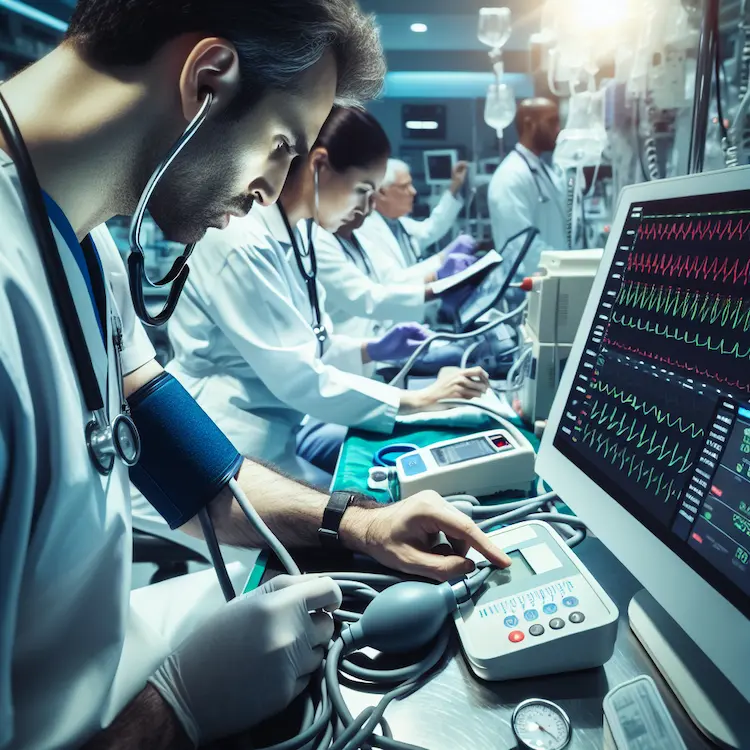Blood pressure (BP) monitoring is a cornerstone of emergency medicine, providing critical information about a patient’s cardiovascular status and guiding timely interventions. In The Philippines, where cardiovascular diseases (CVDs) are the leading cause of mortality, effective BP monitoring is especially vital. This article explores the importance of BP monitoring, compares different methods and tools, and provides practical tips for optimizing its application in emergency settings, emphasizing relevance to Filipino society and healthcare.
The Importance of Blood Pressure Monitoring in Emergencies
Monitoring blood pressure in emergency situations is essential for diagnosing and managing life-threatening conditions such as hypertensive crises, shock, stroke, and heart attacks. Rapid and accurate BP assessment helps clinicians decide on interventions like fluid resuscitation, vasopressors, or antihypertensive medications.
In The Philippines, hypertension affects nearly 28% of adults, according to the Philippine Statistics Authority (PSA). Socioeconomic factors, high salt consumption, and limited access to preventive care exacerbate this issue, increasing the burden on emergency healthcare systems. In such a context, precise BP monitoring can save lives by facilitating early diagnosis and treatment.
Methods of Blood Pressure Monitoring
There are several methods for BP monitoring in emergency settings, each with unique benefits and limitations.
-
Auscultatory Method
- How It Works: A manual sphygmomanometer and stethoscope measure Korotkoff sounds.
- Advantages: Highly accurate in controlled settings.
- Disadvantages: Time-consuming and operator-dependent, making it less ideal for high-pressure emergencies.
-
Oscillometric Method
- How It Works: Automated devices detect oscillations in the arterial wall.
- Advantages: Quick and user-friendly, requiring minimal training.
- Disadvantages: Less reliable in cases of arrhythmias or critical hypotension.
-
Invasive Arterial Blood Pressure Monitoring (IBP)
- How It Works: A catheter inserted into an artery measures BP directly.
- Advantages: Provides continuous and accurate readings, ideal for critical care.
- Disadvantages: Requires expertise and carries risks like infection and arterial injury.
Comparison Table
| Method | Accuracy | Speed | Ease of Use | Best for |
|---|---|---|---|---|
| Auscultatory | High | Moderate | Moderate | Controlled settings |
| Oscillometric | Moderate | High | Easy | Busy emergency departments |
| Invasive (IBP) | Very High | Continuous | Complex | Critically ill or unstable patients |
Cultural and Societal Context in The Philippines
Filipinos face unique challenges regarding BP monitoring and emergency care. Limited resources in rural areas mean that many rely on oscillometric devices for rapid assessments. Meanwhile, urban centers with advanced facilities employ invasive monitoring for critically ill patients.
Culturally, Filipinos often delay seeking medical attention due to financial constraints or fear of hospitals. Community health programs like the “Barangay Health Stations” are crucial in promoting regular BP checks and awareness campaigns. These initiatives align with the Universal Health Care Act of 2019, aiming to improve accessibility to diagnostic tools and emergency care.
Technological Innovations in Blood Pressure Monitoring
-
Wearable Devices
- Wearables like smartwatches equipped with BP sensors are gaining traction in urban Filipino populations. They provide continuous, non-invasive monitoring, allowing early detection of hypertension.
-
Telemedicine Integration
- Remote monitoring systems enable healthcare providers to track patients’ BP data in real-time. This is particularly useful in geographically isolated areas of the Philippines.
-
AI-Powered Diagnostics
- AI algorithms analyze BP trends and predict complications, aiding emergency teams in prioritizing interventions.

Practical Tips for Optimized BP Monitoring in Emergencies
- Select the Right Device: For most emergencies in the Philippines, oscillometric devices are practical due to their speed and ease of use.
- Ensure Proper Technique: Incorrect cuff size or placement can skew results. Always follow standard protocols.
- Regular Calibration: Devices should be checked regularly to maintain accuracy.
- Educate the Community: Awareness programs can teach Filipinos about the significance of BP monitoring and early symptom recognition.
Key Takeaways
- Blood pressure monitoring is indispensable in emergency medicine, especially in managing critical conditions like hypertension and shock.
- Different methods cater to varying clinical scenarios, from manual to invasive approaches.
- Filipino healthcare requires balancing resource availability with the need for accurate, rapid BP monitoring.
- Technological advancements, such as wearable devices and telemedicine, are revolutionizing BP management in The Philippines.
- Regular community engagement and education can empower Filipinos to take proactive steps in monitoring and managing blood pressure.


